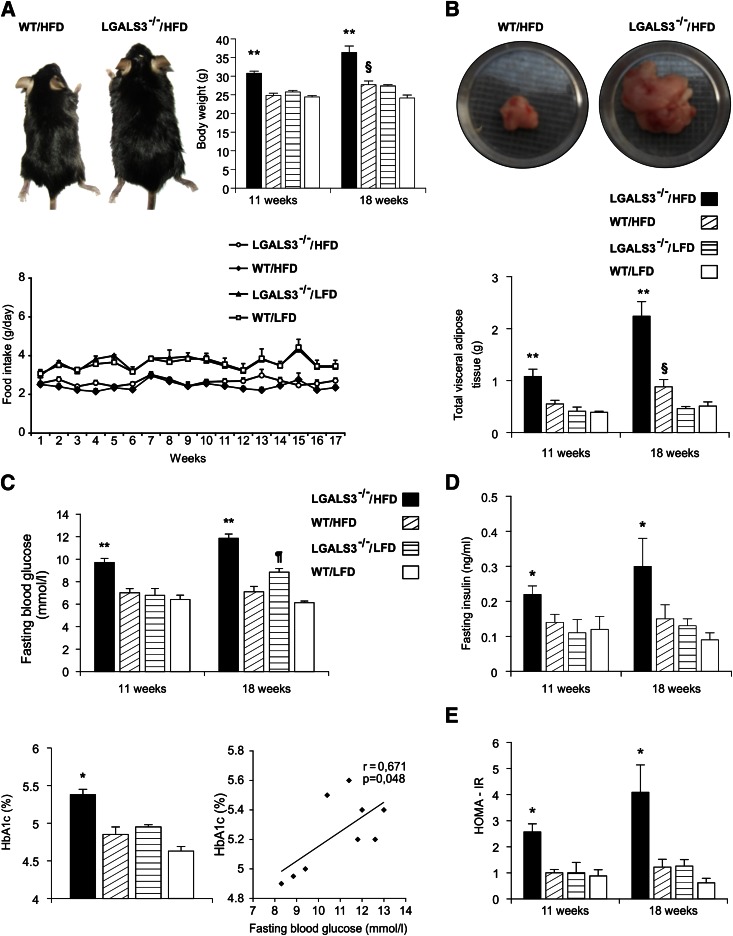FIG. 1.
LGALS3−/− mice fed HFD have increased body weight, enhanced visceral adiposity, hyperglycemia, hyperinsulinemia, and increased HOMA-IR. A: An image of the larger body size of LGALS3−/− vs. WT mice fed HFD. A significant increase in body weights of HFD-fed LGALS3−/− mice compared with other experimental groups after 11 or 18 weeks, and WT mice fed HFD vs. WT mice fed LFD after 18 weeks. Food intake in LGALS3−/− and WT mice. B: Significantly increased amount of VAT in HFD-fed LGALS3−/− mice vs. other experimental groups after 11 or 18 weeks and WT mice on different diets after 18 weeks. C: Significant hyperglycemia of LGALS3−/− mice on HFD compared with other experimental groups after 11 or 18 weeks and LFD-fed LGALS3−/− vs. WT mice after 18 weeks. Increased HbA1c (%) of LGALS3−/− mice on HFD vs. other experimental groups, which significantly correlates with fasting blood glucose levels in LGALS3−/− mice (r = 0.671, P = 0.048). D: Significant increase of fasting insulin levels in sera of LGALS3−/− fed HFD vs. other experimental groups after 11 or 18 weeks. E: Significant increase of HOMA-IR in HFD-fed LGALS3−/− mice compared with other experimental groups after 11 or 18 weeks. The results are shown as the means ± SEM for 8–12 animals (11 weeks) or four to seven mice (18 weeks) per group. r, Pearson correlation coefficient. *P < 0.05; **P < 0.001; ¶P < 0.05; §P < 0.05. (A high-quality color representation of this figure is available in the online issue.)

